The history of the Rolex Turn-O-Graph
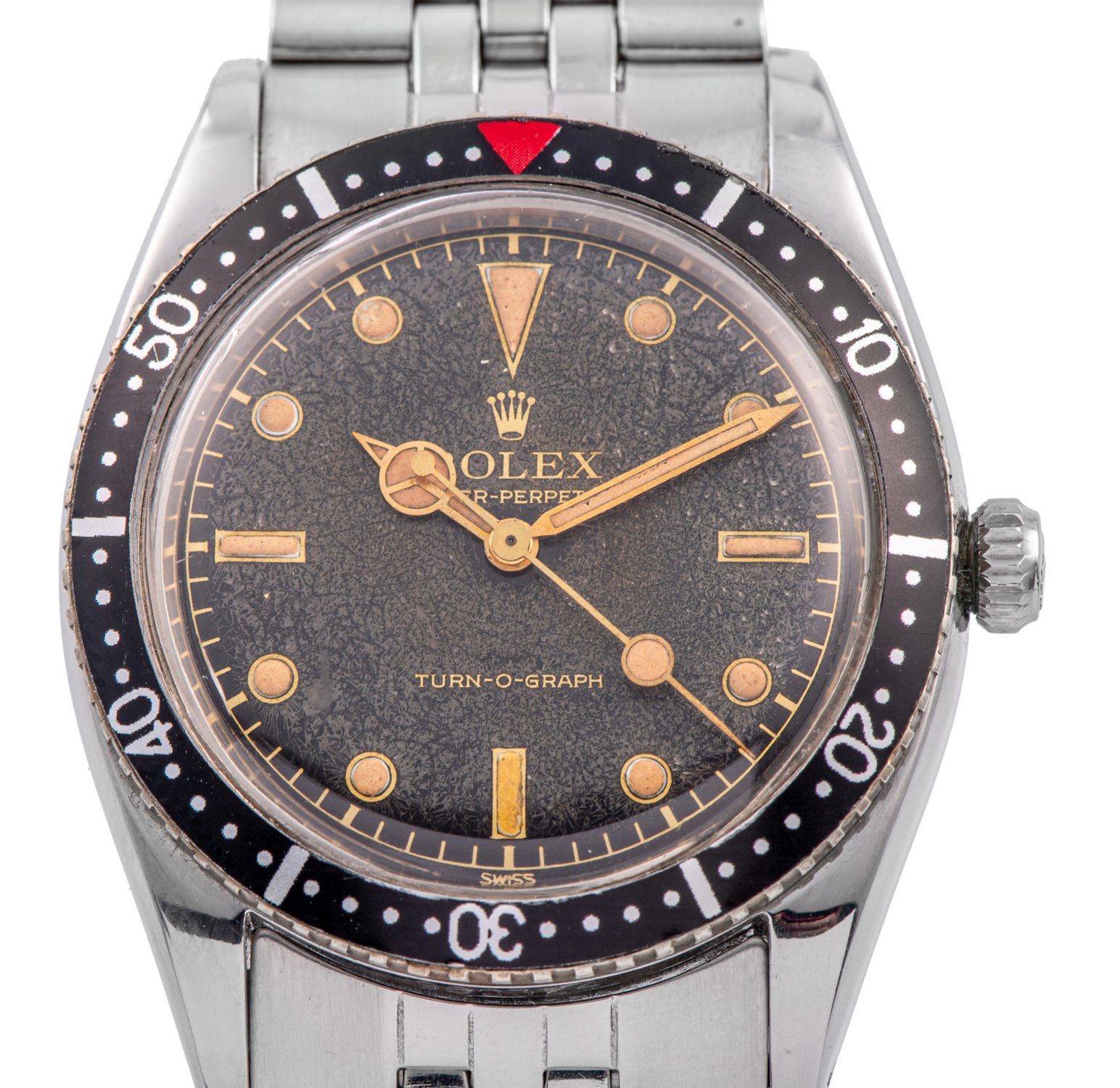
Published: Dec 14, 2021
Of all the highly collectable Rolex watches, the Turn-O-Graph is by far one of the most revolutionary designs in the entire history of watchmaking. Its disruptive design featured a rotatable bezel as its key feature and was first released in the year 1953. Having this incredibly useful function deemed it one of the first tool watches in the industry and occupied a gap in the market that had not yet been filled. Its nickname became the Thunderbird after it was selected by the Thunderbirds of the United States – an aerobatic squadron that chose the Turn-O-Graph specifically for its rotating bezel. Since then, the watch has gone down in history, becoming a highly sought-after vintage watch on the preowned market, let alone a cornerstone to Rolex’s prestigious history in expert timekeeping and luxury watchmaking.
The Turn-O-Graph ref 6202
The first Rolex Turn-O-Graph was the reference 6202. Surprisingly, however, it was not the first watch developed by the brand to feature a rotatable bezel. The first Rolex watch with a rotating bezel was, in fact, the Rolex Zerograph, which launched back in 1937. The Rolex 6202 watch, however, was equipped with a feature that would form the foundations of some of the brand’s popular sports watches such as the iconic GMT-Master and the Submariner. With this function, Rolex was able to push boundaries and become more adventurous and more experimental in its unique approach to watchmaking. The Rolex Turn-O-Graph came in steel, steel and gold and an all-gold configuration – each one with a timeless aesthetic that still brings something young and modern to the wrist even today.
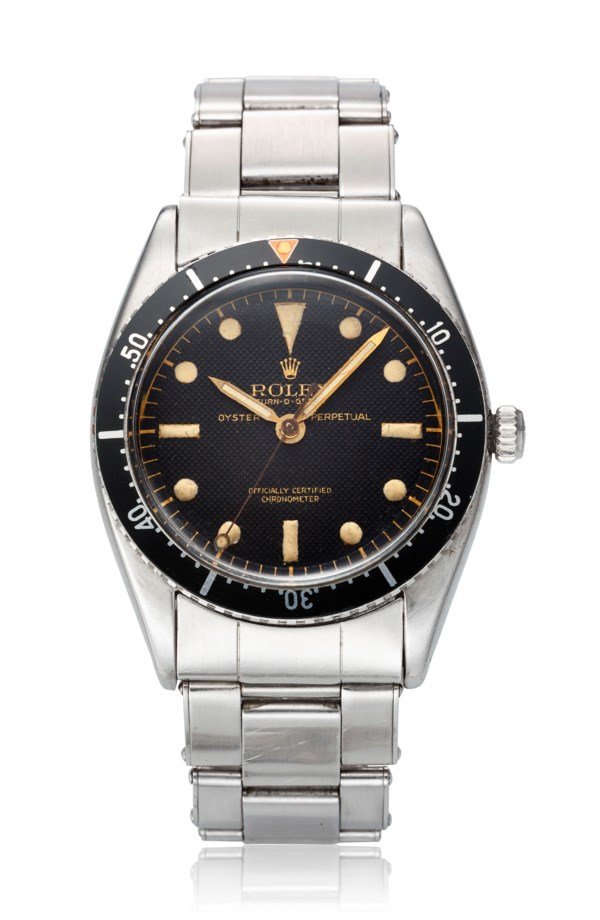
What many watch connoisseurs do not realise is that the Turn-O-Graph signifies one of the brand’s most collectable watch categories to date and stands for much more than just a watch with a rotatable bezel. The model became a sought-after collectable because it offered the complete package for anyone in search of a robust luxury wristwatch: a strong case design, expert timekeeping technology, and a legible dial to be used in conjunction with the bezel itself.
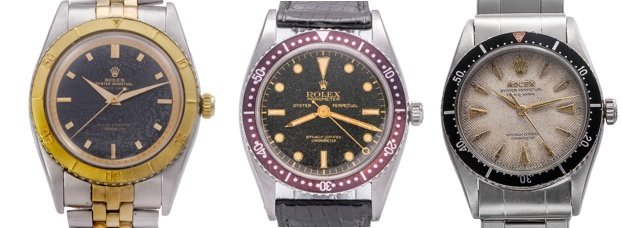
The Rolex Turn-O-Graph ref 6202 dates back to the 1950s and features a bezel calibrated to 60 units. Its metal bezel insert surrounds a glossy black dial with hour markers that have received a generous coating of luminous material for timekeeping in the dark. These features are surrounded by a gilt chapter ring around the edge of the dial. The watch’s signature hour markers come in a mix of circular, triangular and rectangular-shaped profiles whilst its rotating bezel really did open up a new level of practicality for many individuals with various types of occupation. Not only did the bezel pave the way for Rolex’s dive watches, but it also served as an elegant tool for international travellers in the form of the GMT-Master. The design of the Rolex Turn-O-Graph also bore an uncanny resemblance to the original 1958 Milgauss watch with a honeycomb dial and lightning bolt seconds hand.
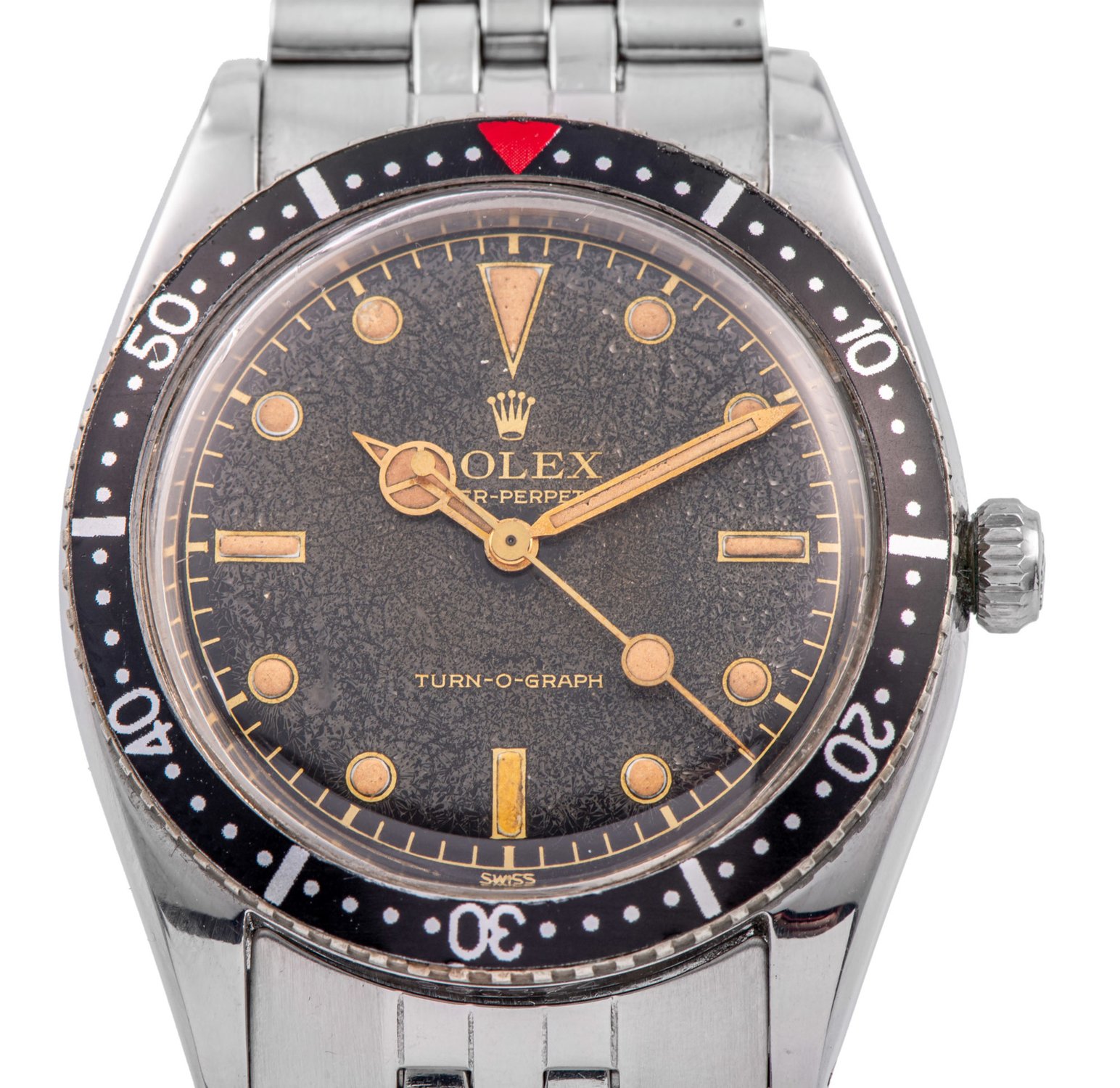
The legendary honeycomb dial: a close up
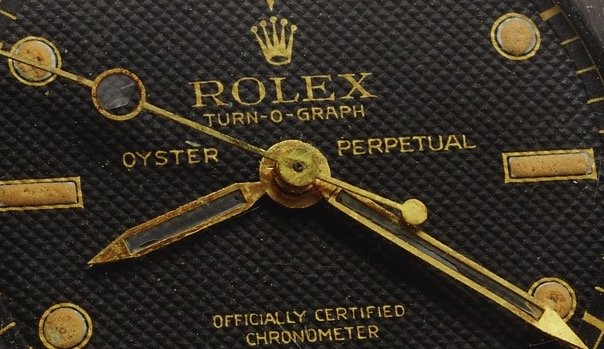
The Turn-O-Graph ref 6309
The second generation of the Rolex Turn-O-Graph was the reference 6309, first introduced in 1954. It remained in production for five years up until 1959. It featured an upgraded movement and a graduated bezel tailored to measure elapsed time in a similar way to a chronograph but without the expense of a chronograph movement. Its design, essentially a Datejust watch, soon began to influence many other leading brands – its large bezel having the ability to shrink the dial somehow, allowing the design to feel more compact than its real size would suggest.

The Rolex Turn-O-Graph ref 6309 was a practical tool watch with a visible dial. The fact that its all-yellow gold case design was expensive to produce made the watch even more exclusive, plus its bracelet was engraved with the same reference number to match the case itself. In addition to this, the Turn-O-Graph 6309 reference was equipped with a date window at 3 o’clock, positioned underneath a cyclops magnifying lens, which officially brought it under the Rolex Datejust banner. These models were powered by the Calibre 743 and Calibre 1065 as opposed to the Calibre A.260 that powered the original 6202 model. The markers on the bezel were reduced to 5 and 10-minute increments in comparison to the 6202 model, which featured 15-minute markers, but also 10-minute markers represented by Arabic numerals, 5-minute increments graduated with dashes, and even dot markers for each minute. These interesting changes helped to further highlight the differences in design between the Submariner – a watch tailored to the needs of the diver, and the Datejust Turn-O-Graph – an elegant dress watch for businessmen with the familiar Datejust date window.
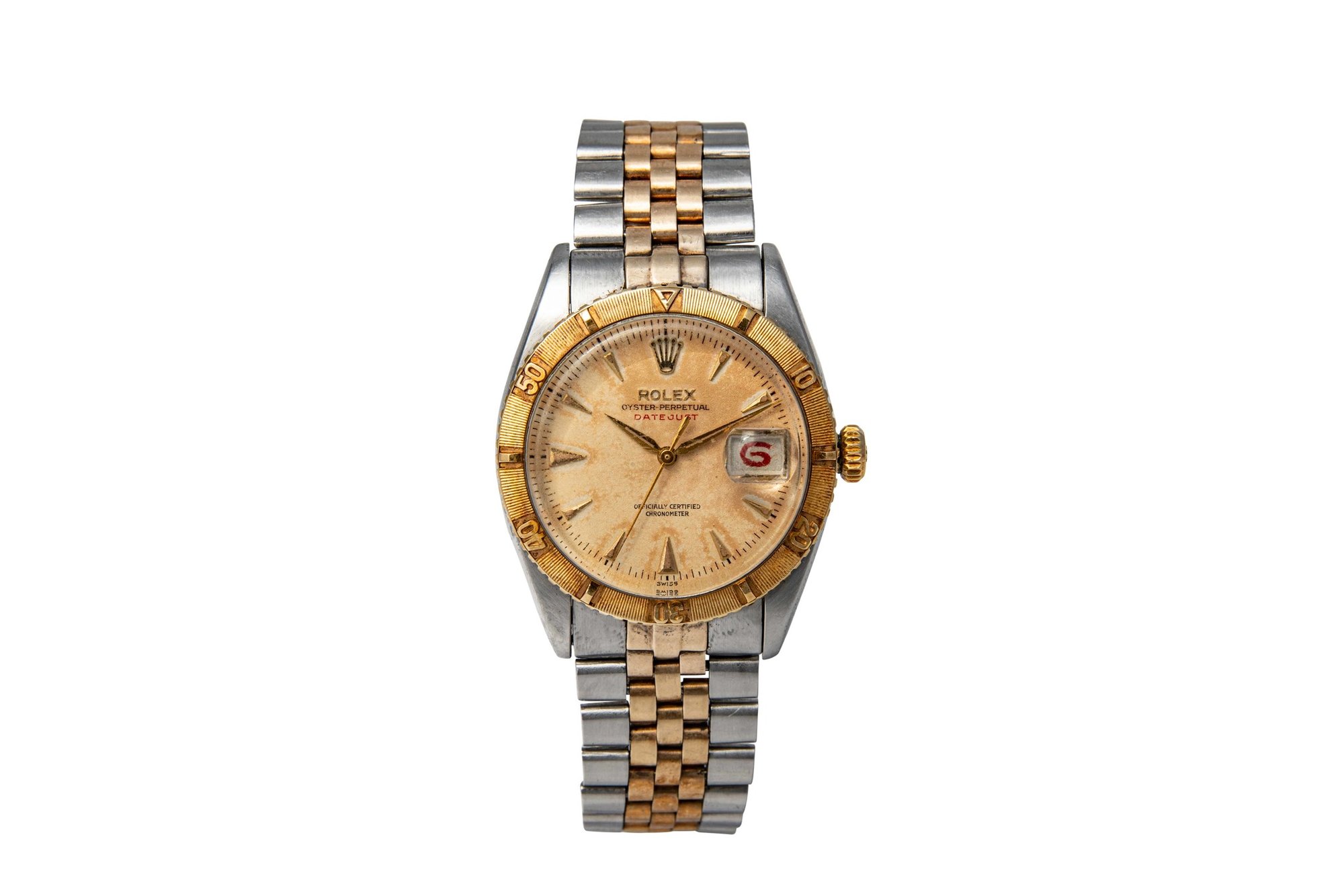
As mentioned during the 1950s, the US Aerobatic Squadron asked Rolex for support by providing them with durable watches and although it is not fully understood how the first Turn-O-Graph watch winded up on the wrist of pilots of the United States Air Force Thunderbirds, the watch quickly acquired its Thunderbird nickname. Some models from this era are particularly valuable to collectors, such as those bearing the logo of the aerobatic team at 6 o'clock on the dial. These were issued only to the pilots in this special unit and are now among the rarest. Up until the Turn-O-Graph’s next major innovation, models were available in different dial colours as well as different case materials. Black, champagne, silver, and white dials were offered either with or without the “Turn-O-Graph” lettering on the display.
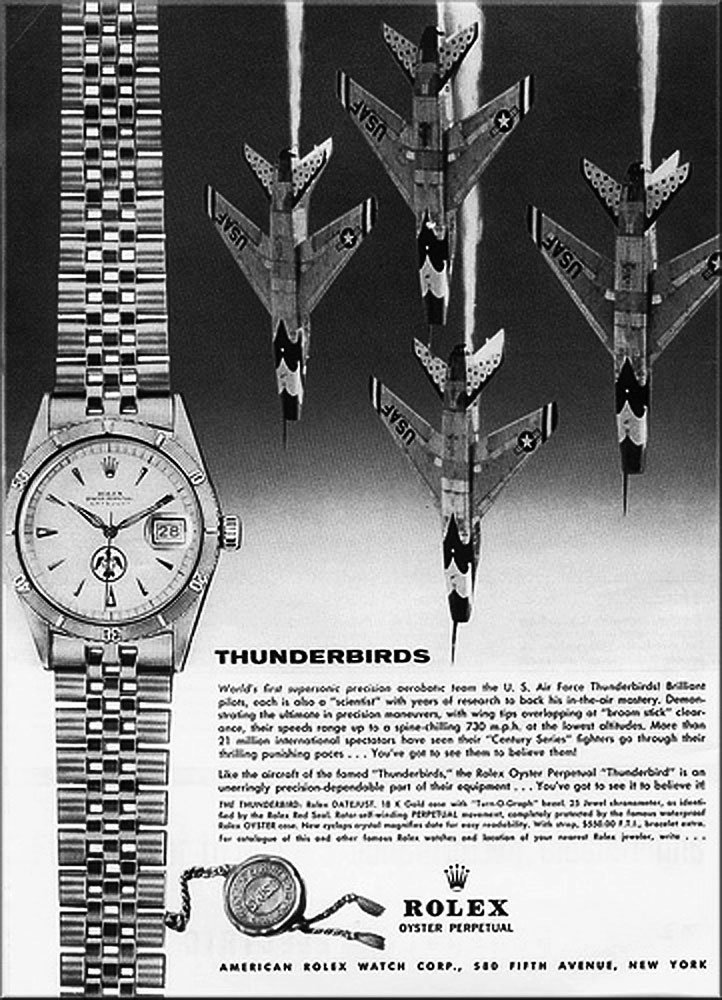
United States Air Force Thunderbirds emblem Dial Close up
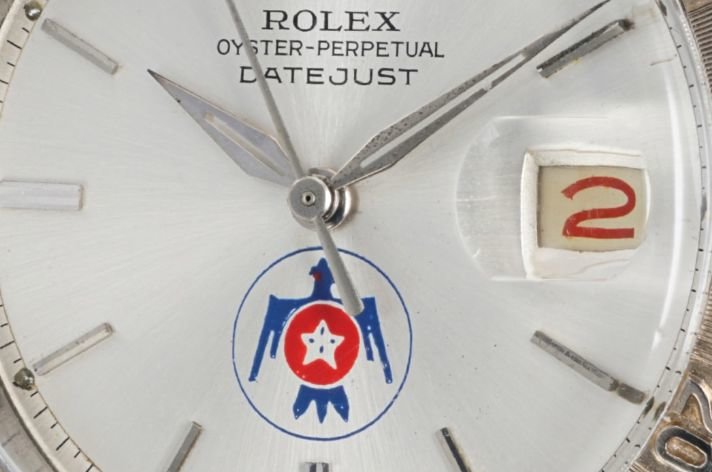
The Turn-O-Graph ref: 116261
Balancing right in between a dress watch and a sports watch, the Rolex Turn-O-Graph ref 116261 is one of the dressier designs from the 6th digit generation period. Proudly showing off its Datejust characteristics, the model, along with the 116262, 116263 and 116264 all measures a 36mm diameter. It features a white dial, delicately accented with rose gold baton hour markers and hands. Its fluted rotating bezel in 18ct Everose gold interacts nicely with a Jubilee bracelet in steel and rose gold. Powered by the famed Rolex Caliber 3135 automatic movement, this self-winding engine has been used throughout the brand’s catalogue. The COSC-certified movement is the successor to the 3035 Calibre and oscillates at a rate of 28,800 vibrations per hour, producing a 48-hour power reserve and comprising a total of 31 jewels. Striking red elements seen in the second hand and the numerals in the date window make for a timepiece that looks equally as stylish on the golf course as it does in the boardroom.
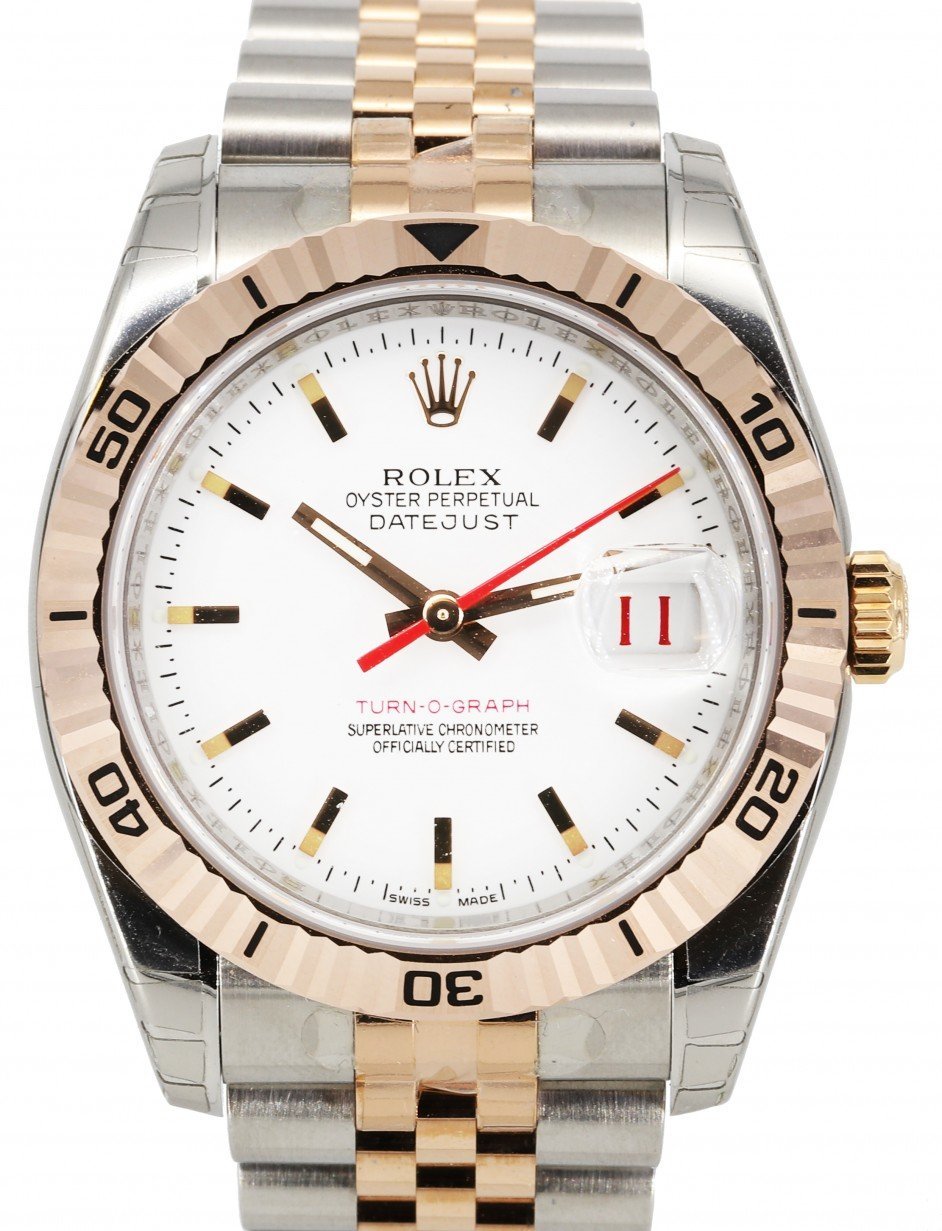
Rolex Turn-O-Graph ref 116264
The Rolex Turn-O-Graph ref 116264 is certainly the more sporty-looking wristwatch from this last generation of the series. Its deep blue dial is surrounded by an 18ct white gold fluted bezel and a robust 36mm steel case. The red second hand and cyclops date exude a more practical tool-like aesthetic for wearing on the wrist. Raised baton indexes against the deep blue dial enhance readability and are situated underneath a scratch-resistant sapphire crystal glass front treated with layers of anti-reflective treatment for a clear view into the display at any time.
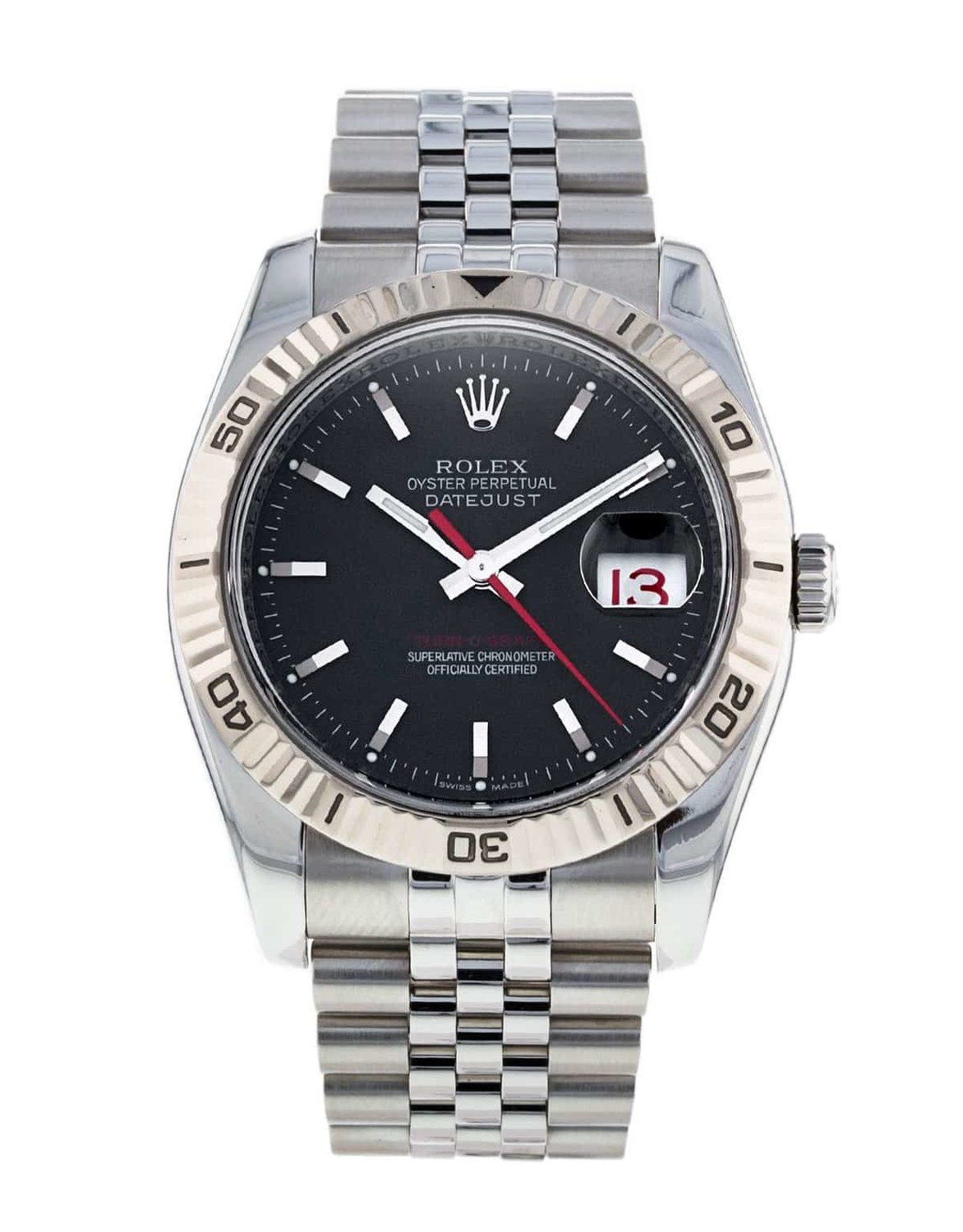
The Rolex Turn-O-Graph ref 116263
The Rolex Turn-O-Graph ref 116263 is a remarkably luxurious model that carries many of the Datejust watch’s distinct design codes. The steel and 18ct yellow gold dress-come-sports watch features the same striking red-accented second hand and the red and black “roulette wheel” date window at 3 o’clock, but this time exudes a more traditional feel thanks to the warming tones of the model’s 18ct yellow gold fluted bezel, crown and bracelet links. The model is fitted on an Oyster bracelet and crafted from a mix of 18ct yellow gold and stainless steel links that give this Turn-O-Graph a dressy yet classic appeal.

As with most Rolex watches, the Turn-O-Graph watch has appreciated in value throughout the course of its history, and this is down to some key factors. The Turn-O-Graph became discontinued in 2011, sending pre-owned prices on the second-hand market soaring. Back in 1953, a solid 18ct gold Rolex Turn-O-Graph watch may on have only cost around $1000 to purchase. Today that same watch could sell for around ten times that figure. It is, however, the revolutionary turning point of the added rotating bezel that the Turn-O-Graph signifies today. The legacy of that very design lives on in many modern-day Rolex watches, yet those original models that paved the way to some of the industry’s most iconic designs will always have a place in the hearts of vintage Rolex watch collectors and sports watch lovers alike.
More Rolex Guides
To find out more about which Rolex hold their value you can read more of our guides where we cover all Rolex Nicknames or our classic guide to the Day Date models and our comparision with their sister brand: Rolex vs Tudor.
Subscribe our newsletter for more news related content and find our quick comparitive guides to help you d ecide which watch you should buy next: